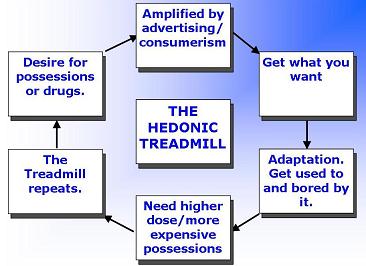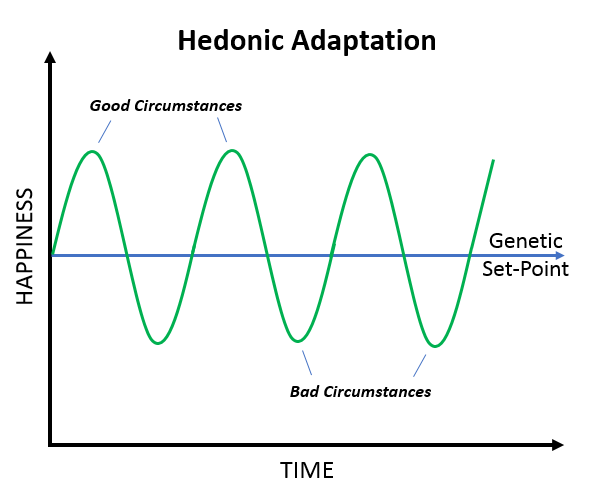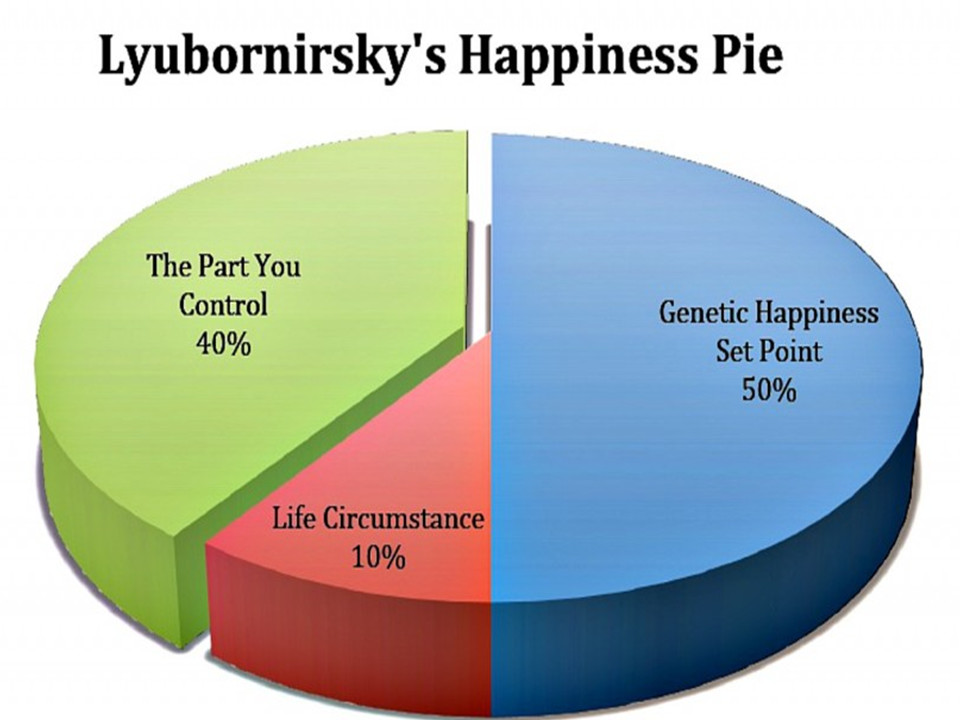"AFTER YOU GET WHAT YOU WANT, YOU DON'T WANT IT"… and Other Interesting Behaviors of Humanity
Let’s kick things off with some interesting history related to the hedonic treadmill concept.
Here is Van & Schenck’s 1920 performance of “After You Get What You Want, You Don’t Want It”–words & music by Irving Berlin. The song soared to #2 in record sales in 1920.
Here are the lyrics of this interesting song…
AFTER YOU GET WHAT YOU WANT, YOU DON’T WANT IT
Listen to me, honey dear
Something’s wrong with you I fear
It’s getting harder to please you
Harder and harder each year
I don’t want to make you blue
But you need a talking to
Like a lot of people I know
Here’s what’s wrong with you
After you get what you want, you don’t want it
If I gave you the moon, you’d grow tired of it soon
You’re like a baby
You want what you want when you want it
But after you are presented
With what you want, you’re discontented
You’re always wishing and wanting for something
When you get what you want
You don’t want what you get
And tho’ you sit upon my knee
You’ll grow tired of me
‘Cause after you get what you want
You don’t want what you wanted at all
Don’t you say that I’m unkind
Think it over and you’ll find
You’ve got a changeable nature
You’re always changing your mind
There’s a longing in your eye
That is hard to satisfy
You’re unhappy most of the time
Here’s the reason why
After you get what you want, you don’t want it
If I gave you the moon, you’d grow tired of it soon
You’re like a baby
You want what you want when you want it
But after you are presented
With what you want, you’re discontented
You’re always wishing and wanting for something
When you get what you want
You don’t want what you get
And tho’ I sit upon your knee
You’ll grow tired of me
‘Cause after you get what you want
You don’t want what you wanted at all
So what is the hedonic treadmill and Hedonic Adaptation?
Let me start with the name, The Hedonic Treadmill is also called the Hedonic Adaptation as it includes how we “adapt” to things (and fall back to our happiness set point which I’ll cover in a minute). I feel in my learning of these ideas I was exposed to both the treadmill idea and now the adaptation idea, but the treadmill idea was where it started for me or at least what grabbed my attention first. The videos and the song tie into the treadmill idea. I’ll share both ideas as they seem to be linked, but kind of different concepts. Both are powerful.
Wikipedia and many others use this sort of standard definition of The Hedonic Treadmill. They say…
“The hedonic treadmill, also known as hedonic adaptation, is the observed tendency of humans to quickly return to a relatively stable level of happiness despite major positive or negative events or life changes. According to this theory, as a person makes more money, expectations and desires rise in tandem, which results in no permanent gain in happiness. Philip Brickman and Donald T. Campbell coined the term in their essay “Hedonic Relativism and Planning the Good Society” (1971). The hedonic treadmill viewpoint suggests that wealth does not increase the level of happiness. Subjective well-being might be largely determined by genetics; that is, happiness may be a heritable trait.”
I’ve shared about this idea before in a self-care article, where I took more of an approach of going through the treadmill a bit. You know…
- we want something which becomes a craving
- we get this thing
- we lose interest and become board with this thing
- then we seek the next new and exciting thing and of course we’re shooting for bigger and better because that last “thing” didn’t really provide “happiness” for very long so we hop on the treadmill chasing that next thing
- the cycle continues

How Does Adaptation and Our Happiness Set Point Play in to all this?
Now let’s move on to the idea of the Happiness Set Point as this can be a powerful concept to understand when discussing the Hedonic Treadmill. I pulled this info from Positive Psychology…
“Studies have shown that our circumstances don’t account for most of our happiness.
Each person has a happiness set point, which refers to one’s genetically determined predisposition for happiness. This set point for happiness is responsible for about 50% of the differences in happiness from person to person.
In her book The How of Happiness, researcher Sonja Lyubomirsky says that:
If you struggle with a low set point, meaning, you tend to gravitate towards sadness or depression, don’t be so hard on yourself. You are, to an extent, dealing with a stacked deck;
Fifty percent, as high as it is, is not 100%, so there’s plenty of leeway for improvement. Your actions, thoughts, and attitudes account for about 40% of your happiness, which is quite significant. (The final 10% is determined by external circumstances.)”
Check out this graph to help understand the Happiness Set Point better –
So I guess the more I explore human behavior and happiness I find more interesting information in my research. In this article’s research I found that 50% of our happiness is kind of set in stone by our genes and who we are. That may be scary sounding, but the good news is only 10% is based on good or bad experiences AND 40% is on our attitude and how we respond to things. I’ve heard stories about poor communities in India where the people are much happier than many Americans. I wonder if this is related to the numbers of distractions Americans have and/or opportunities to “chase” things on the hedonic treadmill. Maybe that those poor communities have fewer distractions or options to chase, so they then focus on internal happiness instead of chasing stuff. I also wonder if Indian culture is more appreciative of the present moment (meditation) improving their happiness set points.
These ideas of India are just my own personal thoughts and may be totally inaccurate, but I wouldn’t be surprised if they were partly true.
I ran the treadmill and tried A LOT of things before I got tired and decided to get off the treadmill for a bit. I think the key, no matter where your happiness set point is, is to create more happiness AT your set point. By doing this, it doesn’t matter if you have highs of good things coming your way, or lows of bad times weighing on you. In either case you are calm, cool , and collected and able to be happy in both situations.
This is the sustainable happiness I talk about from time to time. I feel blessed after nearly a decade of training, this is where I found myself when the pandemic hit. I had the coping skills to deal with even this level of crisis.
Here is a story related to the idea of how we respond or deal with things both good and bad.
This is the story of an old Chinese farmer who lived many years ago.
He had one old horse that he used to plough his fields.
One day, the horse ran away into the hills.
Everyone said, “We are so sorry for your bad luck.”
The old man replied, “Bad luck, good luck, who knows?”
A week later, the horse returned with a herd of wild horses, which now belonged to the old man.
Everyone said, “We are so happy for your good luck!”
The old man replied, “Good luck, bad luck, who knows?”
While his only son was riding one of the wild horses, he fell off and broke his leg.
Everyone said, “What bad luck!”
The old man replied, “Bad luck, good luck, who knows?”
One day, the army came to the village, and took all the strong young men to be soldiers for the emperor.
Only the old farmer’s son was spared, because he could not fight with a broken leg.
Everyone said, “What good luck!”
The old man replied, “Good luck, bad luck, who knows?”
I guess one of the points of this story is to explore how WE deal with the things in our life. Do we RESPOND and REACT in a highly emotional way? Does our reaction and response cause more harm in our lives? Are we able to find peace in whatever comes our way? What can WE control in our lives? Only US and how we RESPOND to things, right? And what would happen if we mastered how we RESPOND? Could we boost our happiness?
Here is a graphic to visually grasp the research that Sonja Lyubomirsky was talking about.
So if all this stuff seems overwhelming and scary and maybe even out of our control, how can we overcome things to create happiness? Well, the first thing we must understand is Happiness is not just a place, but also a process as psychologist, Ed Diener says. He thinks of happiness as something we create and needing a recipe of things instead of delivered via one single thing. Lyubomirsky also states that Happiness takes work. You must be committed to doing the work consistently to really leverage the power of the 40% of the happiness we can control. I would agree in our society we have to work on this and find healthier responses to things, like the farmer in the story above.
Here is a video with ideas to start “getting to work”.
7 Ways to Resist Hedonic Adaptation and Create Lasting Happiness
- Develop a Gratitude Habit. If you’d like you can try my free GRATEFUL LIVING: 5-Day Gratitude Challenge to get started with gratitude.
- Practice Daily Mindfulness. You can also try the free Introduction to Mindfulness & Meditation Mini-Course if you want to start a mindfulness practice. This mini-course is easy to explore in 5 short chunks or complete the whole mini-course in 60 minutes.
- Practice Loving Kindness Meditation. I include a few Loving Kindness Mediations in the 8-week, online, SELFCARE Mindfulness Course.
- Develop A More Optimistic Nature.
- Accept Your Emotions, Whether They Are Positive or Negative.
- Set Meaningful Goals.
- Put More Effort Into Your Relationships.
WHY'D I SHARE THIS SONG from the 1920's?
So I am a music buff and I love all kinds of music. Buying physical music and going to see a lot of live music performances are part of my own hedonic treadmill of “stuff” or “experiences” I continue to buy and maybe even “chase”. Anyhow, I find it interesting when music can teach us a life lesson. So apparently these ideas are not new. The original song was written in the 1920s and below I share Marilyn Monroe singing and performing it for what I thought was a movie role but I have not tracked it down. I think it was performed here around the mid-50s. Then it was in 1971 when the term Hedonic Treadmill was first used or documented in a scientific report.
I have to laugh at the Marilyn Monroe version because I found her recording of this song on an album with Diamonds Are a Girl’s Best Friend. Again, chasing my passion for music.
Anyhow, she also is putting on quite a show in this clip and being flirting and seductive. I chuckle as there is some hypocrisy here I guess. As I’ve said, I too walk this path of hypocrisy or may continue on the treadmill. Maybe this is also a chance to find grace for ourselves and for those in the thick of hypocrisy right now. Or maybe hypocrisy is too strong of a word and the treadmill is just a part of life, but focusing on the Happiness Set Point is where we should be looking for real creation of sustainable happiness.
If you go back up and read the words of the song slowly though, they are powerful words and one must wonder if someone had this wisdom in the 1920s? Also, if the idea was popular enough for Marilyn Monroe to cover, why are these ideas not common place for us all to learn them and learn ways to live in a more healthy way? I also wonder about Marilyn and her overdose. It is said she took 40 pills. It is said that she had mental health issues, but she was a sex symbol and a top-billed actress for a decade when she passed. Would her understanding the words of this song have helped her? Would adding the idea of the Hedonic Adaptation and the Happiness Set Point to the song helped her NOT end up killing herself?
Well, that might just be another article topic and some more research. It is sad though losing great people to suicide or depression or even having people playing small. Every person including you deserve to live our fullest life. I think we can all benefit from understanding the ideas presented today.
I also want to share that suicide is an awful thing. If you are feeling suicidal, please call the National Suicide Prevention Lifeline. Here is their number and click the link to go to their website for more info. +1-800-273-8255
Share your thoughts in the comments below if you have an idea or belief related to why these ideas aren’t more popular or more readily known by most of society.
For Fun, here is Marilyn Monroe doing a cover of this song
Here are the lyrics of this interesting song…
AFTER YOU GET WHAT YOU WANT, YOU DON’T WANT IT
Listen to me, honey dear
Something’s wrong with you I fear
It’s getting harder to please you
Harder and harder each year
I don’t want to make you blue
But you need a talking to
Like a lot of people I know
Here’s what’s wrong with you
After you get what you want, you don’t want it
If I gave you the moon, you’d grow tired of it soon
You’re like a baby
You want what you want when you want it
But after you are presented
With what you want, you’re discontented
You’re always wishing and wanting for something
When you get what you want
You don’t want what you get
And tho’ you sit upon my knee
You’ll grow tired of me
‘Cause after you get what you want
You don’t want what you wanted at all
Don’t you say that I’m unkind
Think it over and you’ll find
You’ve got a changeable nature
You’re always changing your mind
There’s a longing in your eye
That is hard to satisfy
You’re unhappy most of the time
Here’s the reason why
After you get what you want, you don’t want it
If I gave you the moon, you’d grow tired of it soon
You’re like a baby
You want what you want when you want it
But after you are presented
With what you want, you’re discontented
You’re always wishing and wanting for something
When you get what you want
You don’t want what you get
And tho’ I sit upon your knee
You’ll grow tired of me
‘Cause after you get what you want
You don’t want what you wanted at all
One way to overcome the hedonic treadmill and even empower yourself related to your own happiness set point is to start a gratitude practice. Click here if you’d like to learn more about my new Grateful Living: 5-Day Gratitude Challenge!



